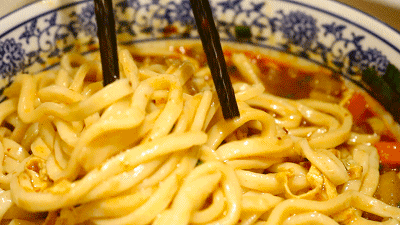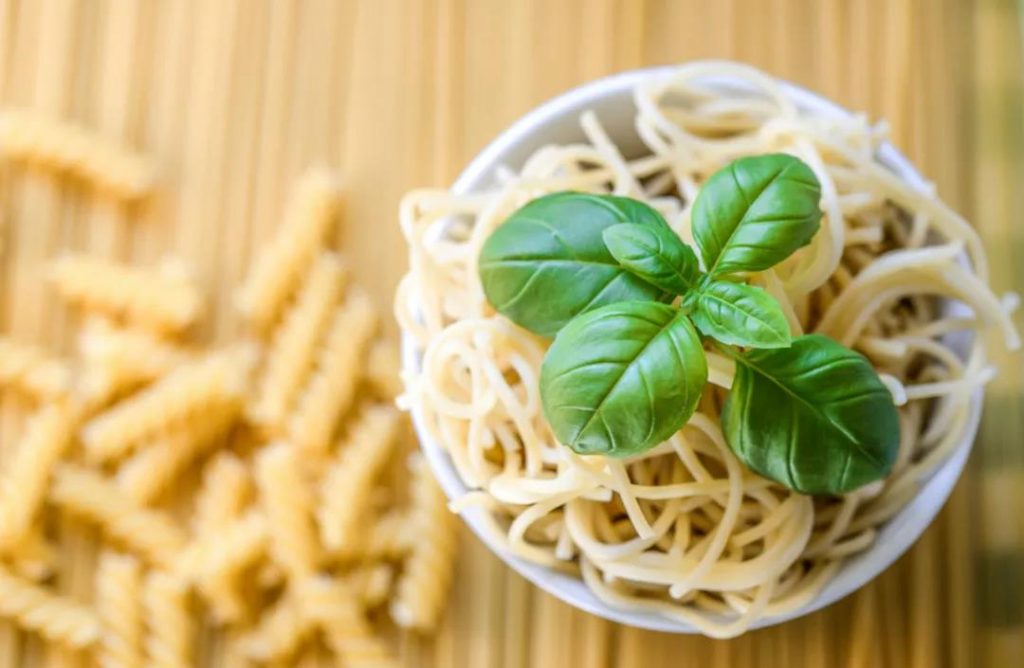
Noodle is a kind of common staple food with rich cook method. Noodles with soybean paste., beef noodles, other kinds of noodles … are deeply loved by people. Moreover, it is easy to store. Every family will store some noodles at home. When cooking, add an egg and a few green vegetables. The cooking is simple and has a unique flavor~
But for a long time, rumors about noodles have been one after another. For example: the noodles are not easy to break. Is glue added? The noodles are too white as the brightener is added. Can’t you eat the foam when cooking noodles? Eating noodles nourishes the stomach than drinking porridge… Are these rumors true or false? Today let’s find out the truth.
Two kinds of noodles can’t be bought. Will it harm your health?
At present, there are many kinds of noodles on the market, with different thickness, color and taste. People also have their own preferences. But there are two kinds of noodles that can’t be bought on the Internet, which will endanger health. What’s going on?
1. Can’t you buy noodles that have been boiling for a long time but not broken?
If you have ever encountered such a situation that some noodles are easy to break after cooking for a long time, while others are very chewy and cook continuously for a long time. At this time, some “experienced” people may tell you, “noodles easy to break are good, hard ones are added with glue. Eating such noodles is just as to eat plastic”. That is surprising.

But in fact, noodles can be cooked for a long time, which may be due to the following reasons:
High gluten protein content: noodles are made of wheat flour, and the main components of wheat flour are starch and gluten protein. Gluten protein is insoluble in water. The higher its content, the stronger the noodles and the less likely they are to break.
Added alkali or salt: alkali and salt can promote the cross-linking of gluten protein molecules and make the noodles more muscular. Even noodles made of the same flour with alkali or salt will be more cooked.
Added reinforcement agent: reinforcement agent is actually an oxidant. Its effect is similar to that of alkali, but the effect is stronger. It is widely used at home and abroad. As long as it is legal and compliant, there is generally no need to worry about health hazards.
Added edible gum: such as guar gum, sodium alginate, modified starch, etc. most of them are “natural products” extracted from plants, and most of them are dietary fiber. Rational use can improve the taste of noodles without endangering health.
2. Can’t I buy too white noodles?
Some noodles on the market are slightly wheat colored, while others are relatively white. Many people instinctively feel that the closer to the color of wheat, the healthier. Those too white may have added whitening agents and dare not buy them. However, can’t white noodles really be eaten?

The whiteness of noodles is related to the following three factors:
Flour yield: control the flour yield so that the flour basically comes from the inside of wheat. The flour will be whiter and the noodles will naturally be whiter.
Oxidation degree of flour: fresh flour contains some natural pigments, such as carotene and lutein, which will be oxidized and degraded gradually after being put in the air for a long time, so as to make the flour white.
Noodles with alkali: noodles with alkali have a relatively high pH value, which will make the pigment in the flour show light yellow, while noodles without alkali will keep the original white in neutral or acidic environment.
In addition, the commonly used flour gluten enhancer azoformamide also has a certain whitening effect, which will make the noodles whiter. However, its safety is high, and its reasonable use generally will not endanger health.
When buying noodles, you should pay attention to these three points
Generally speaking, as long as it is a qualified product purchased by regular supermarkets, you can eat it at ease. But pay attention to 3 points, you can buy healthier noodles.
1. Sodium content: the less sodium, the better
In order to make noodles more chewy, easier to preserve and easier to cook, many noodles will add salt in the production process, and the content is not a lot.
For example, the sodium content of a certain type of noodles is 700mg / 100g, and a bowl of noodles is about 100g. In other words, there are about 1.75 grams of salt (400mg sodium = 1g salt) in a bowl of noodles, which has almost reached 30% of the salt required for a day!
When eating noodles, basically everyone will put salt again, and even soy sauce, bean paste, chili sauce and other ingredients, which can easily lead to excessive sodium intake, increase the risk of hypertension and osteoporosis, and increase the burden of heart, kidney, cardiovascular and so on.
It is recommended to look at the sodium content in the nutritional composition table when buying noodles, and try to choose noodles without sodium (sodium content 0%) or low sodium (sodium content below 500mg / 100g).

2. Type of alkali: sodium bicarbonate is better
Many vermicelli also add alkali in the production process, and there are two kinds of alkali: sodium carbonate and sodium bicarbonate. The former is also called edible soda or soda, and the latter is also called baking soda. The two are not the same.
Relatively speaking, sodium carbonate is more alkaline. Excessive intake is easy to destroy the acid-base balance of gastric juice and may cause dyspepsia. Especially those who have stomach problems themselves are easy to aggravate discomfort symptoms.
Therefore, it is generally more recommended to buy those noodles added sodium bicarbonate. Remember to look at the ingredient list before purchase.
3. Look at the ingredients: these “secrets” to know
When buying noodles, many people will choose “fancy noodles” such as egg noodles, vegetable noodles and coarse grain noodles, believing that they are more nutritious and more conducive to health.
But in fact, only a small amount of chicken whole egg powder is added to egg noodles, and only a small amount of vegetable powder is added to vegetable noodles, which can not provide much nutrition for eggs or vegetables. If you want pasta to be more nutritious, it is more recommended to add some eggs and vegetables when cooking pasta.
When buying coarse grain flour, we should pay more attention: first, see whether coarse grain flour is at the top of the ingredient list; Second, see whether there is the word “fine” in front of coarse grain flour. If coarse cereals flour ranks first in the ingredient list and there is no word “fine”, it is the real coarse cereals flour.
How many misunderstandings have you been in when eating noodles?
Not only are there doubts about buying noodles, but many people are easy to walk into some misunderstandings about eating noodles. How many of the following common misunderstandings did you get?
1. Noodles is more nutritious than rice?
Northerners like noodles, and they generally grow tall and strong. Therefore, some people think that noodles are more nutritious than rice.
However, in terms of the energy supplied, the 100 gram meter is 346 kcal, and the 100 gram surface is 350 kcal. The difference of 4 kcal is a very small unit, which can be completely ignored.
In terms of nutrients, the main components of rice and noodles are carbohydrates, followed by protein and fat. Among them, there are different kinds of trace elements and vitamins, which have their own advantages, so it is difficult to choose which is better.
In fact, in addition to the variety, origin and processing accuracy, it is the cooking method that really affects the nutrition of rice noodles. If you only eat white rice and flour, the nutrition is not balanced. It is recommended to eat with eggs, vegetables and other foods rich in protein, vitamins and cellulose, or alternatively with coarse cereals.
2, diabetic patients can not eat noodles?
Noodles contain a lot of carbohydrates, eat more easily to increase blood sugar, so many diabetic patients are not too dared to eat noodles. In fact, if you master the following four principles, you can eat the same.
Choose more whole grain noodles. The dietary fiber content of this kind of noodles is relatively high, which will not make the blood sugar rise too fast.
Pay attention to the appropriate amount.
Pay attention to collocation. With eggs, vegetables and meat, noodles account for only a small part, which is more helpful to stabilize blood sugar.
Pay attention to order. Before eating noodles, you can drink some soup, then eat vegetables and meat, and finally eat noodles.
After fermentation, the noodle is faster than the unfermented noodle. Therefore, patients with diabetes or hyperglycemia choose the unfermented noodles as food, such as dumplings and pie.

3. Can we eat the foam producing in the noodles boiling?
When you boil noodles, white bubbles often appear. Some people think they are impurities. They must be skim away. But in fact, most of these are soluble proteins dissolved in water. At the same time, some of the starch contained in flour will also be dissolved in water, which will increase the viscosity of the soup, maintain the stability of the foam, and make the foam not easy to disperse.
Therefore, the foam on the boiled noodles can be eaten, but if you do not like it, you can skim if off. After all, it is not expected to take protein from the noodle soup.
Comments